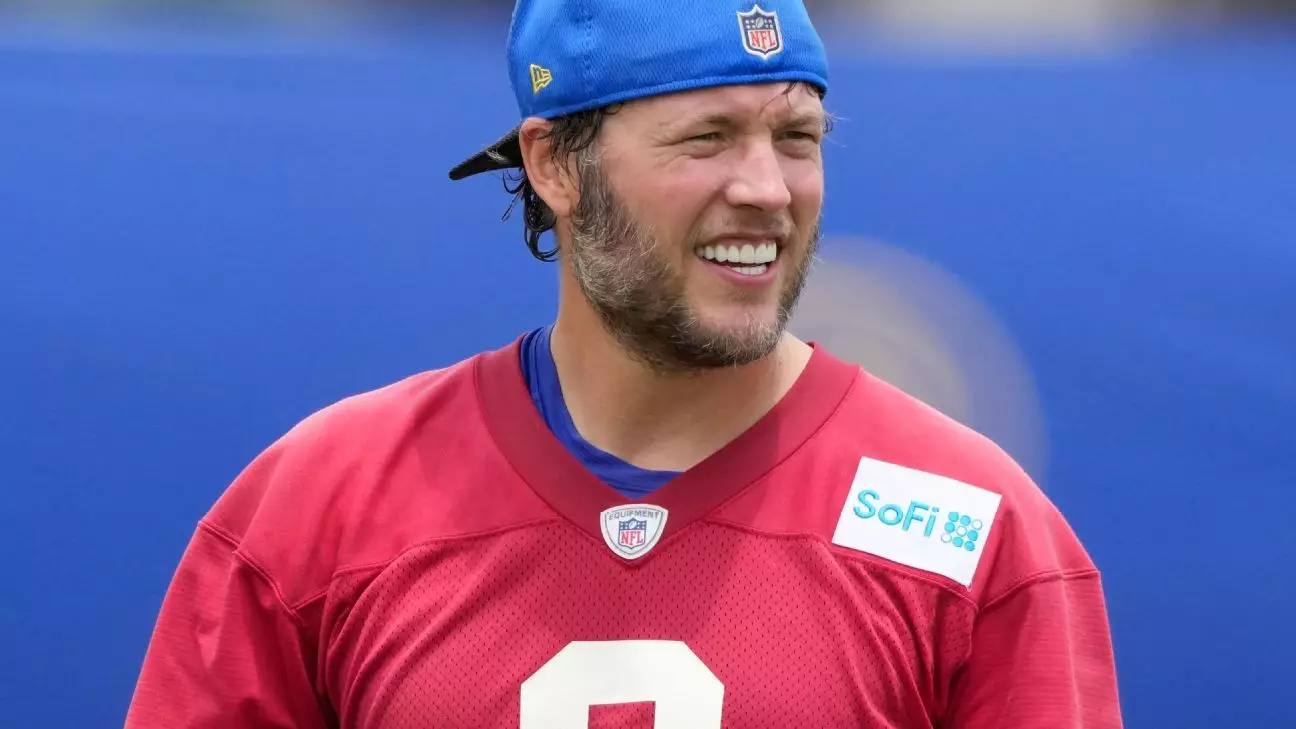The Los Angeles Rams are revealing a calculated approach to reintegrating their veteran quarterback, Matthew Stafford, into the fold. With his back soreness lingering, the coaching staff recognizes the importance of prioritizing long-term health over immediate gains. This isn’t merely about managing an injury; it’s about safeguarding their most valuable asset for the critical stages of the season. Stafford’s absence from practice next week underscores a strategic decision rooted in realism rather than worry. It signals a franchise that understands the finite nature of athletic durability, especially for seasoned players approaching their late 30s.
The decision to keep Stafford away from full practice, despite initial optimism, indicates a shift in focus from short-term results to sustained performance. While fans might be anxious about any delay in returning to top form, Rams’ coach Sean McVay emphasizes that this plan is rooted in careful measurement, not uncertainty. This cautious stance reflects a broader trend in the NFL: teams are increasingly adopting a more patient, injury-conscious philosophy that revolves around smart management, especially with veteran stars whose experience and leadership are irreplaceable.
Implications for the Rams’ Season Strategy
This measured approach carries significant strategic implications for the Rams. Stafford’s health is pivotal for their offensive ambitions, and rushing him back could risk a setback that might sideline him for longer. His involvement in practice has been limited—mostly confined to observing or working with training staff—highlighting a deliberate effort to phase him back in gradually. The team’s goal remains crystal clear: ensuring Stafford is ready for the season opener against the Houston Texans. However, maintaining a flexible, “week-at-a-time” mindset reflects a realistic approach in an era where injury management is as vital as game strategy.
The Rams’ prudence is also evident in their handling of other veteran offensive players. By implementing a modified schedule for key contributors, they are prioritizing freshness over early-season momentum. This approach could pay dividends if it prevents burnout and injury, but it also risks a slow start if the team lacks continuity early on. Still, the balance between cautious recovery and competitive readiness demonstrates a nuanced understanding: exceptional talent must be preserved for the battles that matter most.
Reflecting on Stafford’s Performance and Future Expectations
Last season, Stafford’s statistics painted the picture of a resilient leader, despite the team’s fluctuations. His completion rate of 65.8%, coupled with over 3,700 passing yards and 20 touchdowns, underscored his crucial role in the Rams’ offensive scheme. Yet, injuries and tough years have underscored the fragility of athletic longevity. The decision to hold him out of full practice suggests the Rams are aware of this vulnerability and are taking a pragmatic stance.
The real challenge lies in how effectively Stafford can regain full practice participation and rhythm by the start of the season. Given his experience, it’s reasonable to expect that he will adapt quickly once cleared. However, the team’s cautious approach indicates they are not willing to gamble on his health at the expense of potential long-term season success. This tradeoff—between immediate readiness and sustainable health—is a testament to modern NFL management’s evolution, emphasizing longevity over urgency.
By limiting Stafford’s workload initially, the Rams are making a statement: winning this season starts with health and smart planning. The hope remains that these precautions will translate into a resilient, dependable quarterback ready to lead LA back into playoff contention. In an era where player wellness is increasingly prioritized, the Rams’ measured tactics reflect an intelligent, forward-looking philosophy that values sustained excellence over fleeting victories.

